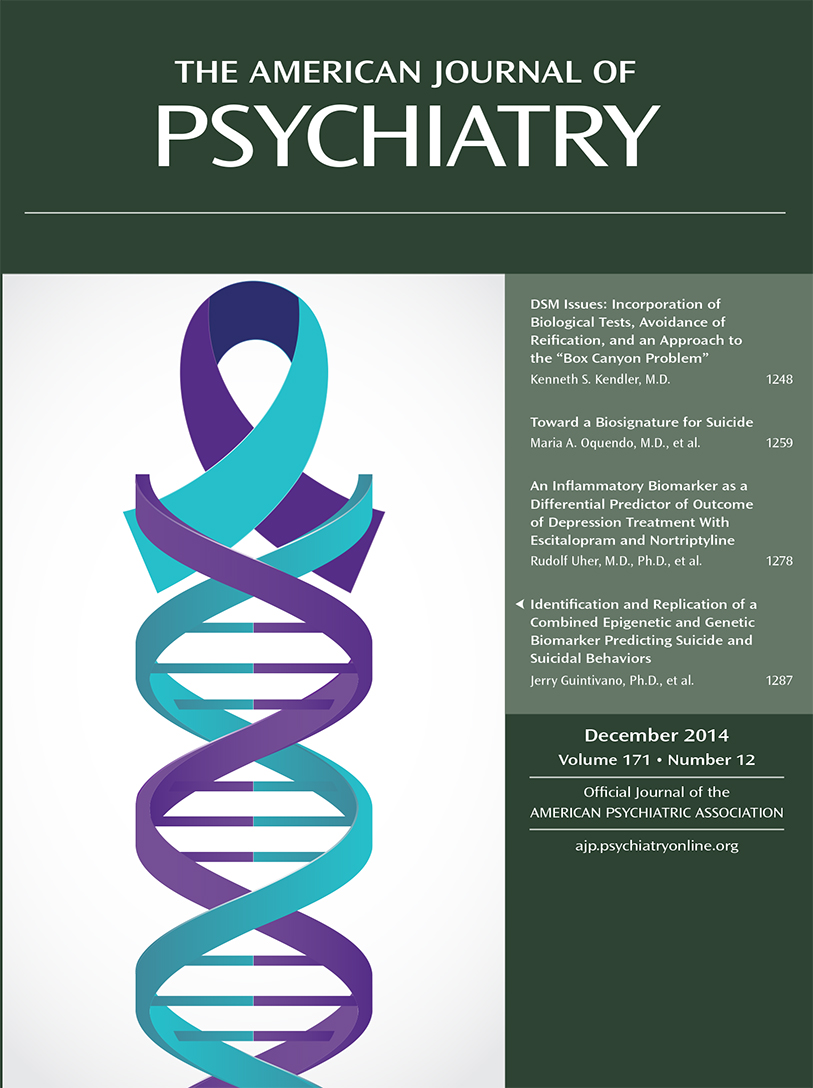Psychotherapy and Psychiatric Science
To the Editor: The review and overview article titled “The Structure of Psychiatric Science,” by Kenneth S. Kendler, M.D., (1) addresses the epistemological status of psychiatric science. A crossfield and multilevel science, known to be incommensurable, it is specified with an utmost diversity of domains. The author indeed suggests three paradigms for a global approach: interventionism, clarifying mechanisms, and explanation-aided understanding.
While the first two paradigms are part of some instrumental approach, the third one is seeking to legitimate psychiatric experience not so much through an instrumental approach as through a communicative approach. It is based on the assumption that third-person perspective can be connected to first-person experience to make it better understandable. But how does it work? Kendler does not specify this.
We suggest that the natural expanding of the third paradigm is within the compass of psychotherapeutic practice, a level also needing scientific explanation. Any psychotherapy implies the effect of the psychotherapist’s words on patient behavior. The therapist’s action operates through offering a plausible explanation for some nonunderstandable one as yet. Such explanation will interact with the flow of understandable life experience.
To move into the first-person perspective, we propose taking into account 1) the status of explanation-aided understanding, 2) the semantic network into which it makes sense, 3) its own mode of interaction with the person, and 4) the relation where it occurs:
| 1) | The status of explanation-aided comprehension is that of some metacognition (2), namely the representation of some representation. Understanding both one’s own behavior and others’ behavior as it may be observed from inside (first-person perspective) and outside (third-person perspective) implies referring to some ready-made stock of representations concerning what occurs in our mental lives (metacognition). | ||||
| 2) | Scientific explanations, such as the salience or efferent duplicate, are liable to make sense only by supplying the semantic network. The explanation seems to be plausible simply because on entering this network, it may fit into a long chain of understandable data. | ||||
| 3) | Causal explanation allows the subject to articulate the experienced disorders into a story by naming them. Naming the trouble enables the subject to summon one’s own history anew (3). | ||||
| 4) | The practice of psychotherapy is not dealing with first- to third-person connection only: it implies a second-person perspective. This you-perspective indeed allows for the validation of the causal explanation in a world shared with others (4). | ||||
1 : The structure of psychiatric science. Am J Psychiatry 2014; 171:931–938Link, Google Scholar
2 : Medicine, Rationality and Experience: An Anthropological Experience. New York, Cambridge University Press, 1994Google Scholar
3 : Metacognitive disturbances in persons with severe mental illness: theory, correlates with psychopathology and models of psychotherapy. Psychol Psychother 2011; 84:1–8Crossref, Medline, Google Scholar
4 : The psychotherapy of schizophrenia through the lens of phenomenology: intersubjectivity and the search for the recovery of first- and second-person awareness. Am J Psychother 2007; 61:163–179Link, Google Scholar



